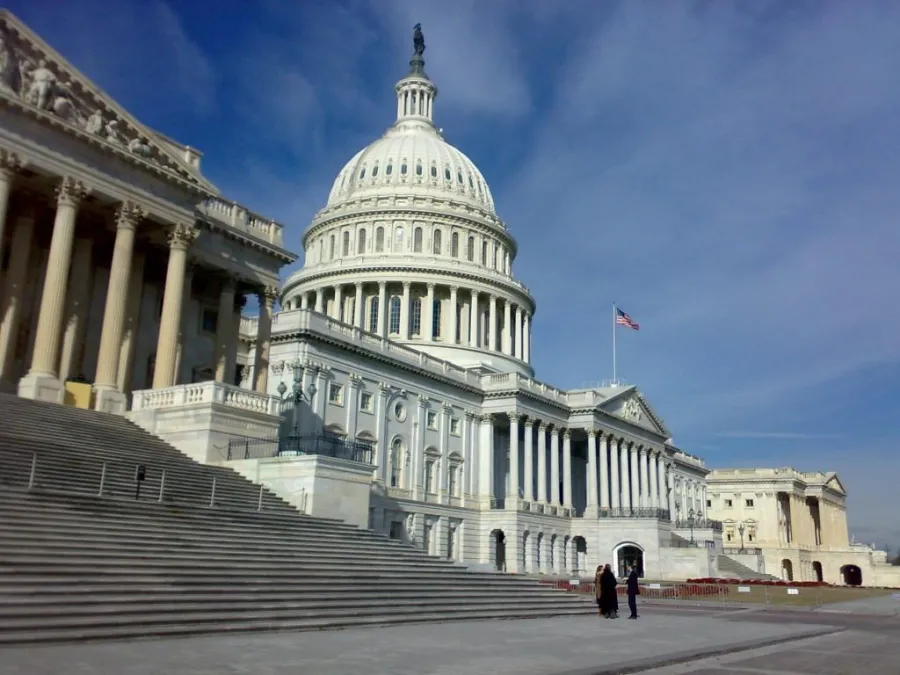CV3 signed into law. Here's what it means.

This afternoon (March 27, 2020), CV3, a $2-trillion stimulus package to lessen the effects of COVID-19 on our economy and citizen’s health, was signed into law. This package is the largest in U.S. history.
The legislation provides more than $500 billion for emergency relief and taxpayer protections to help get the economy moving again. This includes industries hit by the drastic downturns in business due to the virus shutdowns, with $50 billion going to passenger airlines, $8 billion to cargo airlines, $17 billion for companies deemed important to national security, and $425 billion for businesses, cities and states. Auto manufacturers and supplier companies would be able to tap into these funds.
More important, here’s a look at how it directly affects workers:
- [caption align="right"]
 [/caption]
[/caption]
Supplemental payments of up to $1,200 for individuals and $2,400 for couples, with $500 added for every child, will be made. The amounts will be based on 2019 tax returns (for those who filed them) and 2018 information (for those who have not). Specifics include:- Individuals with an adjusted gross annual income of less than $75,000, and $150,000 for joint filers, would receive the full payment.
- People earning over that amount would see their payments reduced by $5 for each $100 in income over that amount.
- Individuals earning over $99,000 and married couples making more than $198,000 will not receive a payment.
- People with incomes under $2,500 are eligible for $600, or $1,200 for a married couple.
- Individuals receiving unemployment insurance will receive an additional $600 per week for up to four months. You should reference your state’s unemployment rules for details as several states have already expanded their unemployment eligibility and benefits that may be in addition to the new federal expansions. This supplemental benefit will last for four months. For most workers this, as with normal unemployment benefits, will be equal to full wage replacement. Learn more >>>
Additional increases to unemployment include:
- Expanding Access: Through the end of the year, part-time, self-employed, and gig workers will have access to unemployment benefits.
- Waiving Waiting Weeks: Federal monies will incentivize states to eliminate waiting weeks.
- Extension of Benefits: An additional 13 weeks of federally-funded unemployment is available.
Other provisions included in the bill to help businesses continue to pay wages are:
- The availability of $25 billion in grants to airlines and $4 billion to cargo carriers to be used exclusively to pay employee wages, salaries and benefits.
- A small business loan fund of $350 billion to cover salary, wages and benefits, worth 250% of an employer’s monthly payroll, with a maximum loan of $10 million.
- Tax credits for retaining employees, worth up to 50% of wages paid during the crisis, for businesses forced to suspend operations or that have seen gross receipts fall by 50% from the previous year.
- Delaying payroll taxes for employers. Half of the deferred tax must be paid by the end of 2021 and the other half by the end of 2022.
 [/caption]
[/caption]
Key points assisting in health care are:
- An earmarked $117 billion for hospitals and veterans’ health care.
- $16 billion for the strategic national stockpiling of pharmaceutical and medical supplies.
- Requiring group health plans and insurance providers to cover preventive services related to coronavirus without cost sharing.
Restrictions are also in place for large corporations who receive a bailout:
- [caption align="right"]
 [/caption]
[/caption]
No stock buybacks or dividends for the length of any loan provided by the Treasury plus 1 year. - Restrictions on any increases to executive compensation.
- Protecting collective bargaining agreements.
- Prohibiting businesses controlled by the President, Vice President, Members of Congress, and heads of Executive Departments getting loans or investments from Treasury programs.
- The creation of the Treasury Department Special Inspector General for Pandemic Recovery to provide oversight of Treasury loans and investments and a Pandemic Response Accountability Committee to protect taxpayer dollars.
Two previous bills were signed into law earlier in the month. CV2 was passed March 6 and CV1 was passed on March 18.
The details of these are as follows:
- The first bill to address the COVID-19 pandemic (CV1) was signed into law on March 6. It provided emergency funding to educate the public, prepare health care facilities, develop vaccines and therapies, and purchase necessary medical supplies. It also provided a temporary waiver to allow Medicare recipients to use tele-healthcare services.
- The second bill (CV2) was signed into law on March 18. It ensured Americans would receive cost-free testing. In addition, it shored up the social safety net by providing additional monies to states’ unemployment programs, as well as food assistance programs like WIC, food banks, school lunches, and senior nutrition programs. It also provided emergency paid sick leave and paid medical leave to workers who worked for an employer with more than 50 workers, but less than 500.
As COVID-19 legislation changes, we will keep you updated on progress and how it affects our UAW brothers and sisters.
